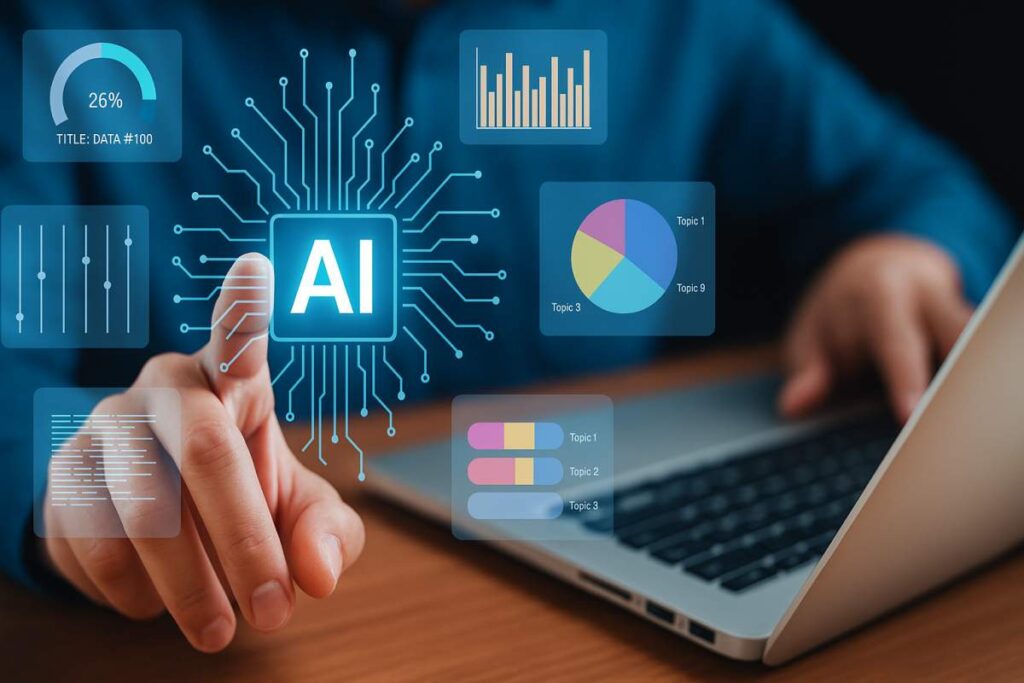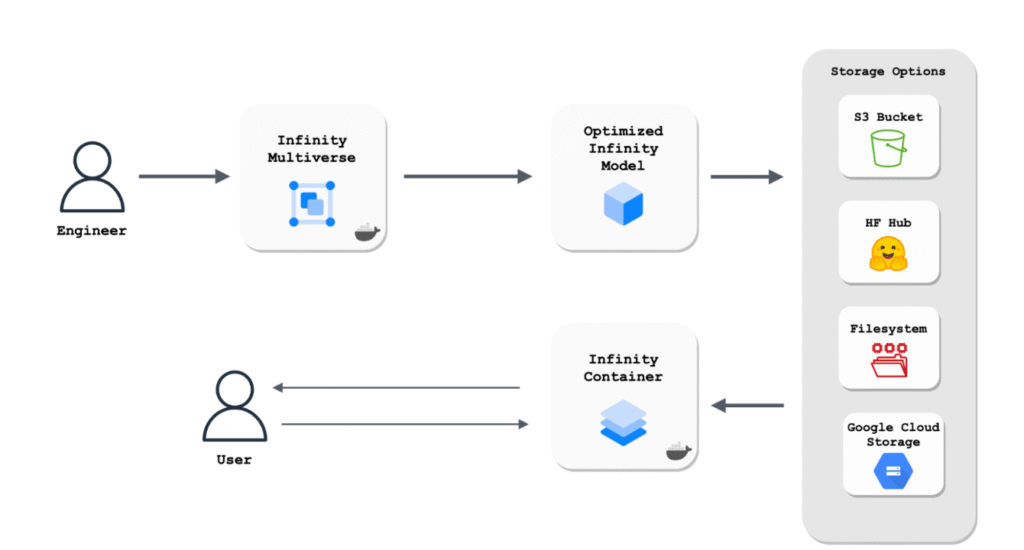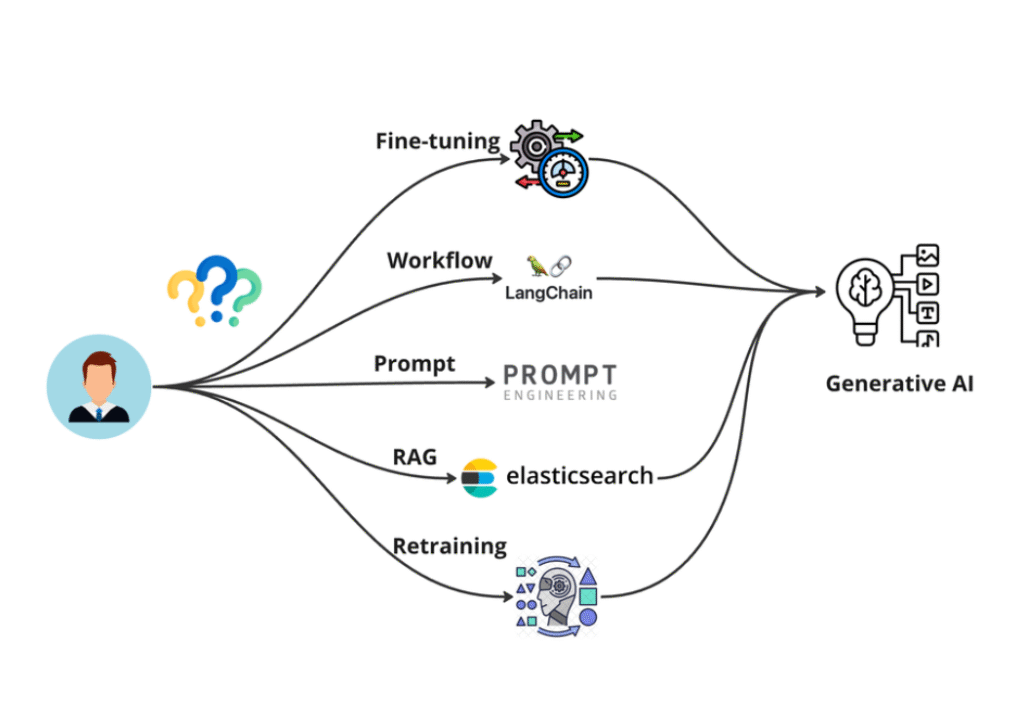Democratizing Access to Advanced Technology

Open source AI tools open the gate for starters, researchers and hobbyists to experiment with technology for example, Hugging Face’s Transformers library provides free access to state-of-the-art models like BERT and GPT-2, allowing every individual to create a robust National Language Processing (NLP) applications.
Key Benefits:
- Cost Efficiency: No licensing fees.
- Transparency: Audit algorithms for bias or errors.
- Collaboration: Global communities improve tools iteratively.
A 2023 Stanford AI Index Report explain that 65% AI projects using open source frameworks, up from 42% in 2020 this ratio increase rapidly in 2025. This shift is driven by tools that flexibility with ease of use.
But the impact goes beyond statistics. According to the story of EleutherAI, a decentralized collective that built the GPT-Neo model to rival Open AI’s GPt-3 without any corporate funding. Their work highlights how open source communities can compete with industry giants by pooling resources and expertise.
Quickening Invention Through Collaboration
Open Source AI increases problem solving. When shallow mind released Alpha Fold, an AI system forecasting protein structures, researchers worldwide used its open source code to tackle diseases like malaria. Similarly, Meta’s Segment Anything Model (SAM) changed computer vision by allowing developers to “cut out” objects in images with minimal training data
Top Open Source AI Tools to Know
1. TensorFlow: The Industry Standard

Google’s TensorFlow is a foundation for machine learning workflows. Its unique ecosystem helps to do everything from computer vision to support learning.
- Best For: Production-grade deployments.
- Community Strength: 167k GitHub stars, extensive tutorials.
But TensorFlow isn’t limited just for engineers. Start-ups like Replit use it to power AI-driven code completion tools, democratizing software development. For example ,Airbnb uses its dynamically price rentals, while Twitter (now X) employs it for content recommendation algorithms.
2. PyTorch: The Researcher’s Favorite

PyTorch, renowned for its dynamic computation graph allows real-time adjustments, powers businesses like Meta and scholarly study. It serves as the foundation for initiatives like OpenAI’s Whisper.
- Best for: academics and rapid prototyping.
PyTorch’s edge rests in its versatility. For instance, Tesla’s Autopilot system makes use of PyTorch, which uses real-time data processing to enhance algorithms for self-driving cars.
3. Hugging Face: The an NLP powerhouse

NLP power house that goes beyond transformers, Hugging Face provides datasets, model hubs, and tools like Diffusers for generative AI, making it indispensable for NLP enthusiasts.
Hugging Face’s “Spaces” platform lets users deploy AI apps in minutes. A developer in Indonesia recently used it to build a Bahasa Indonesia translation model for rural healthcare workers.
4. LangChain: For LLM-Powered Applications

LangChain simplifies building apps with large language models (LLMs), offering modular components for chatbots, summarization, and more.
Startups like Copy.ai use LangChain to create SEO-optimized content generators, reducing manual writing by 70%.
Comparison Table: Open Source AI Tools at a Glance
| Tool | Use Case | Ease of Use | Community Support | Unique Edge |
| TensorFlow | Production ML | Moderate | ⭐⭐⭐⭐⭐ | Scalability |
| PyTorch | Research | High | ⭐⭐⭐⭐⭐ | Flexibility |
| Hugging Face | NLP/Generative AI | High | ⭐⭐⭐⭐ | Model Hub |
| LangChain | LLM Apps | Moderate | ⭐⭐⭐ | Modularity |
Challenges: Points to be considered of Open Source AI
1. Maintenance and Sustainability
While open-source tools are free, they’re not always low-effort. Projects like Apache MXNet have struggled with dwindling support, highlighting the need for active maintainers.
The “tragedy of the commons” plagues many projects. Without funding, tools risk stagnation. For example, the once-popular Keras library now relies on TensorFlow’s ecosystem for updates.
2. Integration Complexities
Mismatched dependencies or documentation gaps can stall projects. A 2022 GitHub survey found that 34% of developers abandoned tools due to poor documentation.
Take OpenCV, a computer vision library. While powerful, newcomers often struggle with its steep learning curve and fragmented tutorials.
3. Ethical and Legal Risks
Models such as Stable Diffusion are facing backlash due to copyright issues. Tools like Fairlearn aim to reduce bias, but ethical governance remains a community effort.
The artists’ coalition “Spawning” litigated permanency AI for training models on copyrighted artwork without consent.
Basically, it is a wake-up call for open-source ethics.
The Future: Trends to Watch
1. AI Governance Frameworks
Initiatives like the EU’s AI Act and tools like IBM’s AI Fairness 360 are pushing for standardized ethics in open source projects.
Canada’s Algorithmic Impact Assessment tool, for instance, helps developers audit models for bias before deployment.
2. Small Language Models (SLMs)
Most of the projects like Microsoft’s Phi-3, expect a surge in compact, efficient models optimized for edge devices.
Farmers in Kenya now use SLMs on solar-powered tablets to predict crop yields and the best thing is no internet required.
3. Open Source AI Hardware
RISC-V and frameworks like TensorFlow Lite play a vital role to reduce the gap between software and affordable hardware.
Organizations like RADICL are creating open source AI chips to reduce reliance on Nvidia’s GPUs.
Conclusion: Join the Open Source Revolution
Open source AI tools aren’t just code—they’re a movement. Whether you are refining a model on Kaggle or contributing to a GitHub repository, you are engaged in a global ecosystem fostering equitable innovation.
Ready to deep dive?
- Take an experience with Hugging Face Spaces for hands-on AI projects.
- Share your favorite tools in the comments below.
- Subscribe for our weekly AI innovation digest.
Visual Elements Suggested
- Image: Collage of tool logos with the tagline “Powering Tomorrow’s AI.”
Internal Links:
- How to Start Contributing to Open Source AI Projects
- Ethical AI: Balancing Innovation and Responsibility
CTA: “Which open source AI tool has transformed your workflow? Let us know—and don’t forget to share this post with your network!”



